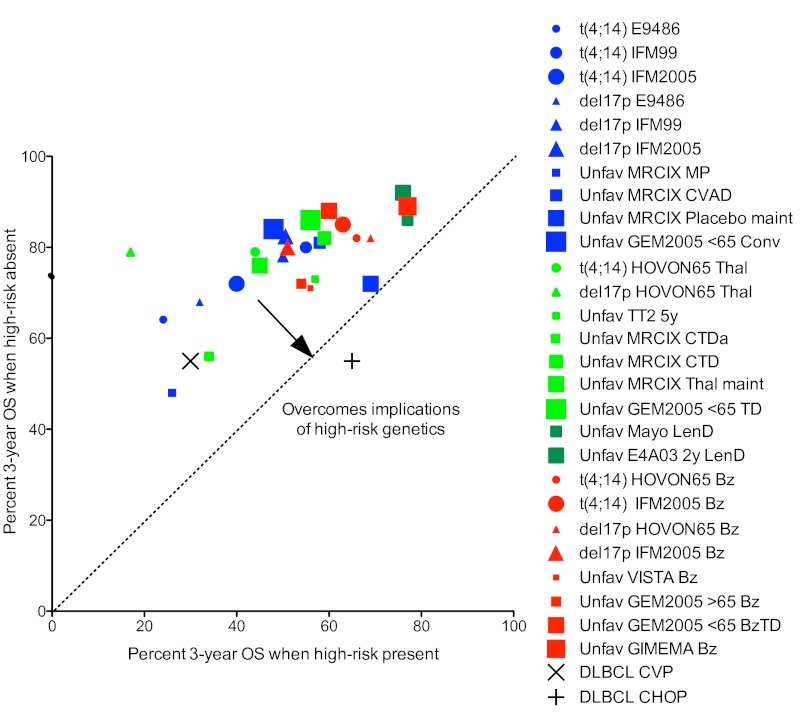Figure 2.
Identification of regimens that overcome the poor prognostic impact of various genetic lesions in MM. xy plot of percent 3-year OS for patients with and without different genetic lesions treated with conventional, thalidomide or bortezomib-based therapies. Data from Table 3 for MM patients with (x-value) or without (y-value): t(4;14) (circles), del17p (triangles), unfavorable FISH (squares) treated with conventional (blue), thalidomide (light green), lenalidomide (dark green), or bortezomib (red) based regimens. The larger studies are represented with larger symbols. The regimens with data points closest to the dotted line have the most similar survival rates for patients with or without a given abnormality and are best at overcoming the implications of high-risk genetics. A conceptual example is given of the introduction of doxorubicin in the treatment of non-Hodgkin lymphomas. Diffuse large B-cell lymphoma, which had a shorter survival then other lymphomas, was suddenly found to have a better survival after the introduction of doxorubicin. None of the drugs in MM has such a dramatic effect on any genetic subtype of the disease. M indicates melphalan; P, prednisone; C, cyclophosphamide; V or O, vincristine; A or H, doxorubicin; D, dexamethasone; Da, attenuated-dose dexamethasone; Conv, conventional chemotherapy arm of GEM2005 for patients younger than 65 years (VBMCP/VBAD + Bz × 2 + ASCT × 1); T or Thal, thalidomide; Len, lenalidomide; Bz, bortezomib; and maint, maintenance.

